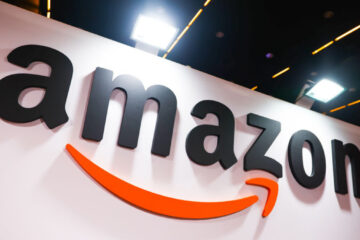Give the people what they want.
The gaming landscape was a very different space ten years ago, with a strong focus on connecting users via online play. At that time Microsoft ( (MSFT) – Get Microsoft Corporation Report) – Get Microsoft Corporation Report was first to build a robust platform to serve that need with its Xbox Live service, leaving Nintendo and Sony ( (SNE) – Get Sony Corp. Report) – Get Sony Corp. Report struggling to catch up as Microsoft’s sales numbers rocketed skywards.
Then, a small video broadcast brand called Justin.tv unveiled a brand new service called Twitch in 2011, and everything changed.
Twitch is still most gamers’ platform of choice.
Jakub Porzycki/NurPhoto via Getty Images
How Twitch Changed the Gaming Industry
Garnering 3.2 million unique users right out of the gate, Twitch correctly identified a need gamers didn’t know they had before it existed: To broadcast their content in real time to an audience more than ready to watch it.
But there was more to the experience than just those who wanted to broadcast. Thanks to Twitch, gamers no longer had to rely on trailers to decide whether or not to buy a game, or hope that a YouTuber might upload some of the gameplay. Instead, they’d find a streamer playing it and watch the full experience there.
They also flocked to the platform to learn tips and tricks, watch speedrunners (gamers who complete games in record times) play competitively, and seek community in stream chats, where other fans like them gathered to watch as well.
By 2014, several major companies had taken notice of Twitch’s popularity, including Google (GOOGL) – Get Alphabet Inc. A Class A Report and Amazon (AMZN) – Get Amazon.com, Inc. Report. In the end Amazon was the winning bid, ponying up $970 million to acquire the video game streaming service. And what a deal it got, because that price was a pittance compared to what Twitch would go on to make.
Browsing Twitch’s Discover page on an iPad.
Shutterstock
Why Microsoft Wants a Piece of Twitch
Today, Twitch boasts up to eight million creators streaming on its platform each month and 31 million visiting to see the content they create. While YouTube tried to compete with its own YouTube Gaming in 2015 after losing the battle to acquire Twitch, it just didn’t stick with gamers, and in 2018 the company rolled its features into the main YouTube website.
Enter Microsoft, which was hard at work on its own plan to fire up a streaming competitor soon after Twitch’s launch. It bought livestreaming service Beam in 2016 and rebranded it as Mixer, paying high-profile streamers such as top “Fortnite” player Tyler “Ninja” Blevins millions to leave Twitch for it and hoping their massive audiences would follow.
It also built the app into Windows 10 and XboxOne to make it easy for users to access, and tried to emulate Twitch’s wildly popular emote culture with its virtual currency Embers, which was used to purchase unique stickers to use in stream chats (in other words, NFTs that were actually useful).
But after four years it was still unable to compete with Twitch, and Microsoft chose to shutter the service.
Knowing all this, you can almost hear the sigh of resignation in Microsoft’s announcement today that it will partner with Twitch and feature to allow gamers to stream directly from their Xbox One and Series X|S consoles.
Microsoft certainly tried its best to come up with its own service to compete with Amazon, but Twitch’s head start on livestreaming created a gulf too wide to bridge. Its growth has continued its meteoric ascent as a wider variety of creators flocked to the service, growing non-gaming sections such as music, talk shows, and art.
It’s also served as a new outlet for artists and musicians unable to perform in public spaces due to Covid, allowing them to build a brand on Twitch and make up for that missing revenue with their livestreams.
So it’s not so much about trying to compete with Amazon/Twitch anymore, as that ship has sailed. Instead, companies like Microsoft need to consider how to innovate in the way Twitch has. We know it’s capable, as it’s done it in the past with Xbox Live. But for now, it seems to be leaning on an old adage instead: If you can’t beat ’em, join ’em.


